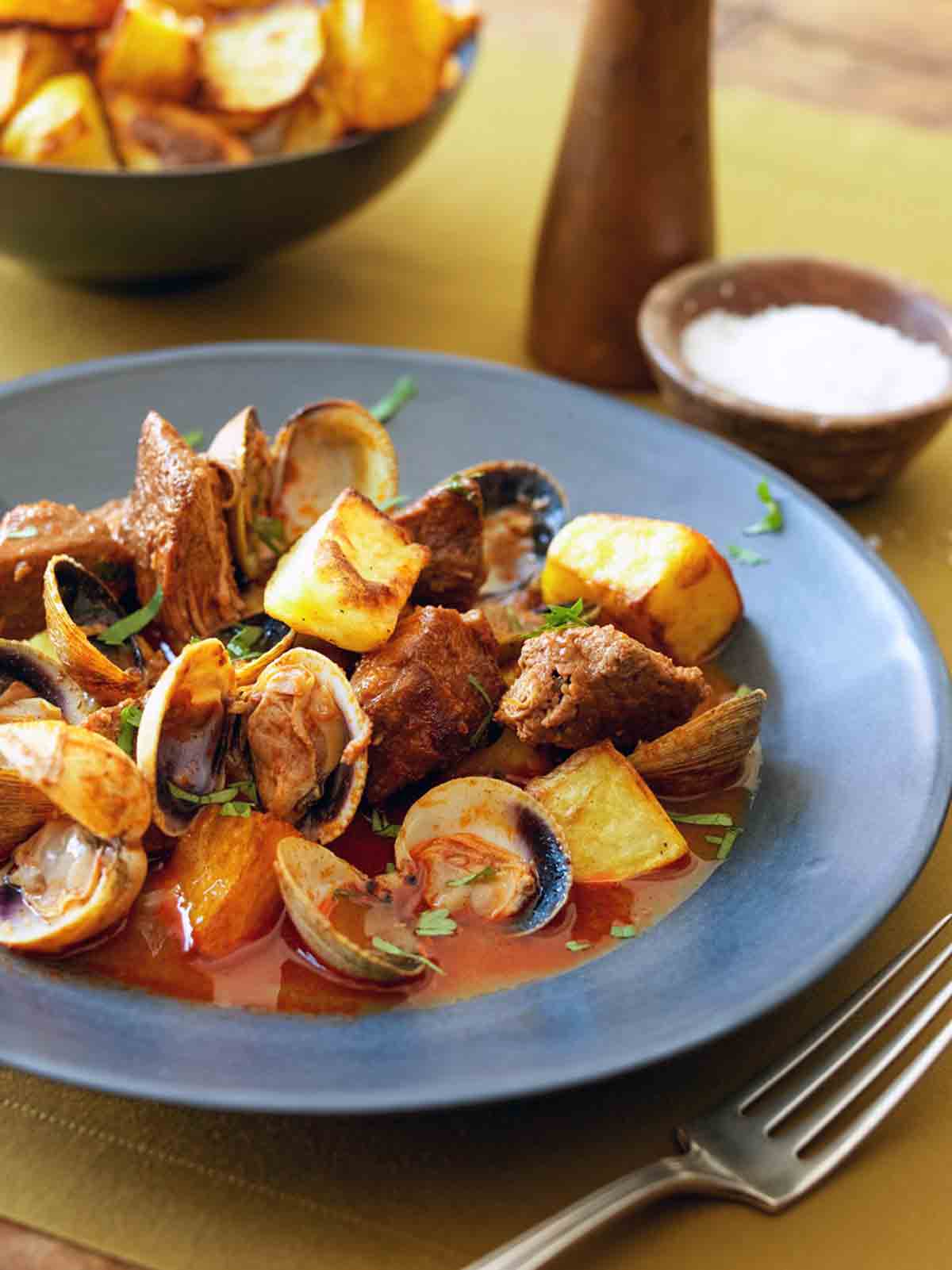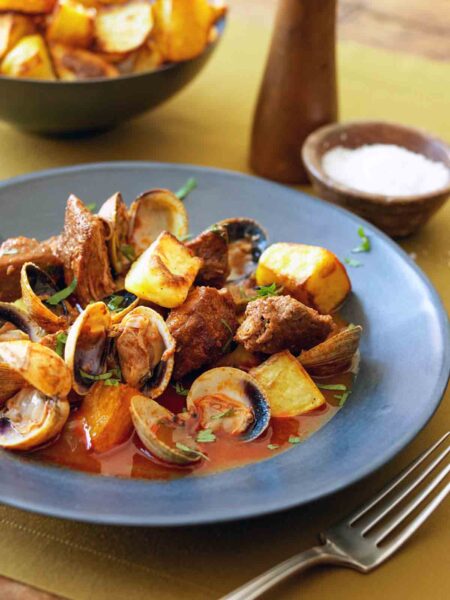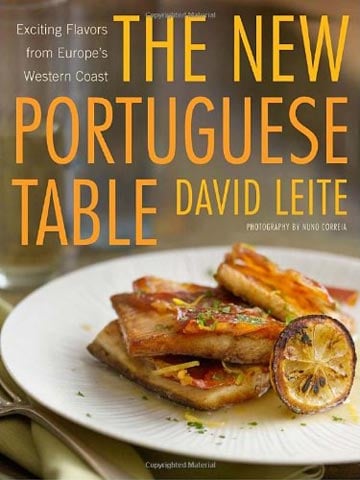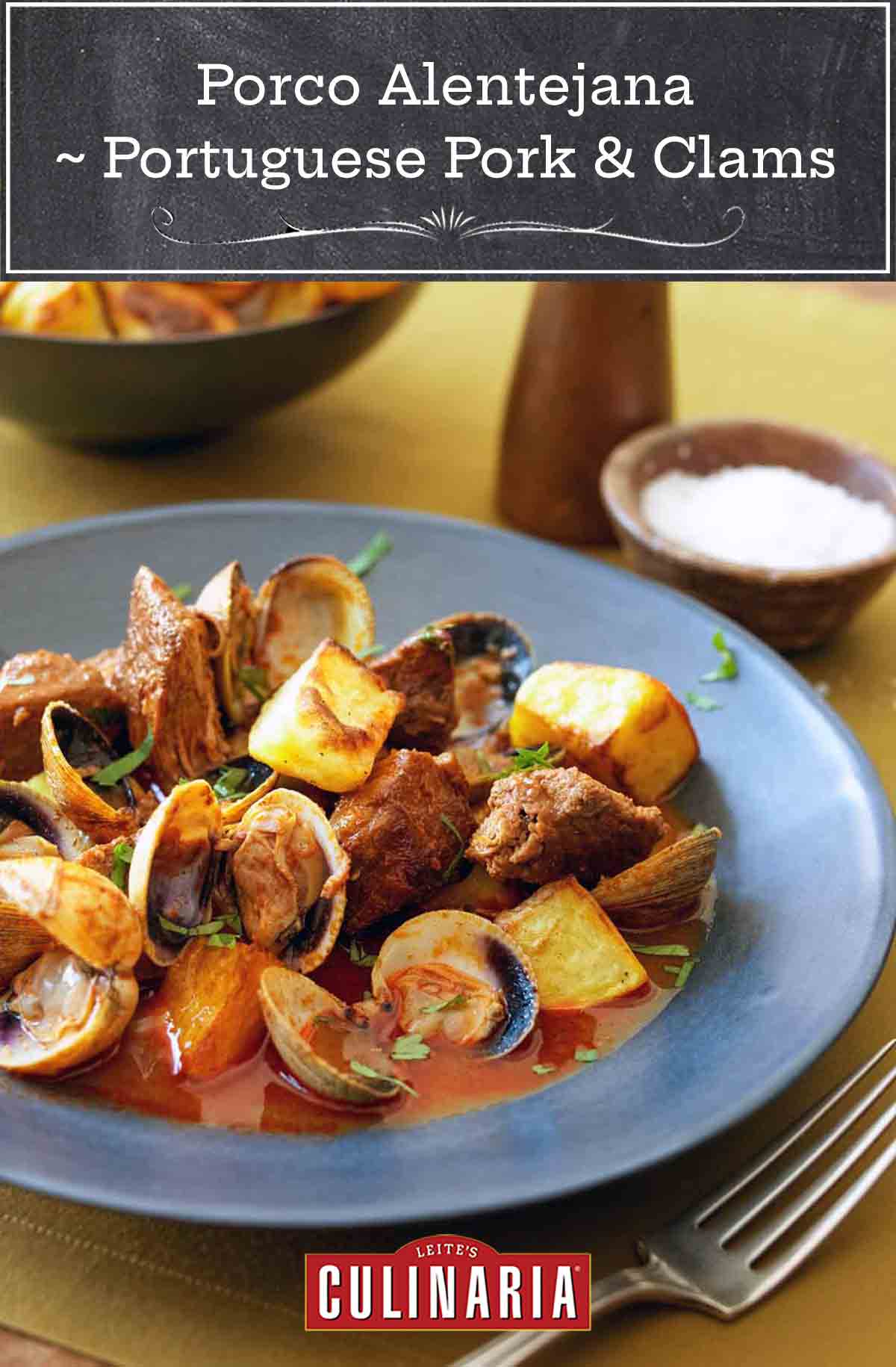
Portuguese pork and clams is from the Alentejo, the country’s vast plains region, but my version bears only a passing resemblance to the original. Portuguese cooks typically fry the marinated cubes of pork loin in lard, making for some tough chewing, even with Portugal’s tender pork.
The version I was weaned on was braised, requiring hours of cooking so that the meat would soften and break down. I use pork shoulder (aka pork butt), an excellent choice for juicy, tender morsels—with significantly less time on the stove.–David Leite
Pork and Clams FAQs
We don’t recommend it. The lean cuts of pork will be tough and chewy after the long braise. Stick with pork shoulder or butt here.
Always look for clams with closed shells when buying live, and always buy from a licensed and reputable supplier. Fresh clams (and other shellfish, for that matter) should have a “Harvested in the USA” label, and the supplier/fishmonger should be able to tell you exactly when and where they were harvested.
You may notice that there’s a bit of dirt and sand on your clams. No worries at all, the muck around it actually helps keep the clam moist until you’re ready to use them. Just soak the clams and give them a good brush before cooking.
Generally speaking, a clam that doesn’t open is probably dead. While you could still eat it, don’t. You don’t know why it died (and there are lots of reasons…none of them good) before you got your hands on it, so don’t tempt fate.
This also goes for open clams that don’t close when you tap them on the counter before cooking. As well, some clams are just so tightly joined to the shell that they’re not going to open—they’re alive but tough enough that you wouldn’t want to eat it anyway. Stubborn bast*rds!

Portuguese Pork and Clams | Porco Alentejana
Ingredients
- 3 pounds boneless pork shoulder or butt, cut into 1-inch (2.5-cm) chunks
- 1/4 cup red pepper paste
- 1 3/4 cups dry white wine
- 6 tablespoons olive oil, plus more if needed
- 2 medium yellow onions, coarsely choppped
- 3 cloves garlic, minced
- 2 pounds Yukon gold potatoes, peeled and cut into 1-inch (2.5-cm) cubes
- Kosher salt and freshly ground black pepper
- 3 1/4 pounds small clams, such as cockles, manila, butter, or littlenecks, scrubbed and rinsed
- 1/4 cup chopped fresh cilantro leaves
Instructions
- In a medium bowl, toss the pork chunks with the red pepper paste. Add the wine and toss again. Cover with plastic wrap and refrigerate for at least 24 hours or up to 36 hours.
- Position a rack in the middle of the oven and crank up the heat to 400°F (200°C).
- In a colander set over a large bowl, drain the pork, reserving the marinade. Pat the pork dry with paper towels.
- In a large pot over medium-high heat, warm 3 tablespoons olive oil. Working in batches, add the pork and cook, stirring occasionally, until browned on all sides, 5 to 7 minutes. Add more oil in between batches, if needed. Transfer the pieces to a plate using a slotted spoon. If the bottom of the pot develops a dark coating, tip in some water in between batches and scrape it up.
- Lower the heat to medium, add the onion, and cook until soft, about 5 minutes. Add the garlic and cook for 1 minute more.
- Pour in the reserved marinade, return the pork to the pot, and cook, covered, over low heat until the meat is tender, 1 to 1 1/2 hours. If it looks as if the liquid will burble away, spoon in a bit of water.
- Meanwhile, in a large bowl, toss the potato cubes with the remaining 3 tablespoons oil, season lightly with salt and with plenty of pepper, and scatter in one layer on a rimmed foil-lined baking sheet. Roast, flipping them once or twice, until golden brown, about 45 minutes.
- Discard any clams that feel heavy (which means they’re full of sand), have broken shells, or don’t close when tapped.
- Raise the heat under the pork to high, stir in the clams, cover, and cook until they open, 7 to 10 minutes. Toss out any that refuse to pop open. Taste the broth and season with salt and pepper if needed.
- To serve, remove half the clams from their shells, and return them to the pot. Toss out the shells. Line the bottom of the serving bowls with the potato cubes, top with the pork and clams and broth, and sprinkle with the cilantro. Have a large bowl at the ready for the shells.

Nutrition
Nutrition information is automatically calculated, so should only be used as an approximation.
Recipe Testers’ Reviews
This hearty meal was so satisfying and comforting, and our whole family loved it. The pork was meltingly tender, and the clams gave a pleasant brininess to the spicy broth. Even my kids were fighting over the last clam in the pot. It was an enjoyable weekend project and well worth the effort.
I used inexpensive Pinot Grigio and Manila clams. I didn’t need to add any additional oil between batches of meat or any water while searing or braising the meat.












This dish was one of my grandmother’s specialties. She never shared her recipe but her pork was always so tender. For years I have tried to recreate it, and this is by far the closest I have ever come. Thank you! What a treat!
Thank you, Bethany!
What a great recipe, and easily scalable too! Since its just my wife and I, I used a 12-oz pork loin instead of the butt (less fat) and scaled down the rest of the ingredients to 1/3 except the red pepper and wine, which I made a half recipe as I wanted some extra braising liquid. The pork was wonderfully tender and tasty, and the clams provided a different textural balance to the dish. She Who Must Be Obeyed had requested this be placed into the rotation of dinners!
I hate to say it but this isn’t even passing for Carne de Porco à Alentejana. The moment you braised it, it is no longer the dish. I grew up eating this dish (I’m Alentejana), and the pork should be fried, and only fried. Never once that I’ve made this dish has the pork ever been tough. Traditionally the potatoes are served on the side. What you’ve got here is a pork stew with clams.
Sorry 🙁
Nancy, thanks for writing. I’m very much aware of the original dish–I’m Portuguese and lived in Lisbon for some time. The reason I went this way–for an American readership of my cookbook–is no matter how hard I tried, I couldn’t get the tender, melt-in-your-mouth texture of the pork you have in Portugal. Whenever I fried it, it became tough. Our pork, sadly, is nowhere near the quality of porco preto and Alentejan pork.
I believe you’re writing from Canada. If you have any suggestions, the names of pork suppliers, or tips, I’m all ears. I always love learning from my readers.
Hi there. I’m super excited to use this recipe. And like you mentioned how pork can become real tough if treated agressively ( pan frying) the possibility of toughness is great. I thought of using tenderloin just so I could see what happened . But for the large scale I’m purposing this recipe for I will use the pork butt/ shoulder and I am pan searing and braising for large quantity ease. Thanks so much for the recipe share and super excited to work with it . Kristen
Kristen, you’re more than welcome. I would use pork tenderloin only if you were sauteing quickly to sear, not to simmer it.
Really unnecessary and patronizing. This dish, cooked as written, is simply outstanding. Call it what you will. David handled your comment much more tactfully than would I.
Hello, Vicki. Thanks for the comment!
Couldn’t agree more. My family are all from the Azores. Island of St Michael, I have been eating this dish all my life. I was never able to make the pork so succulent that the meat actually falls apart in my mouth and doesn’t taste like I’m eating a pork chop. The finest restaurants in my area, Fall River/New Bedford Massachusetts do not compare to the taste of this recipe. My family recipe doesn’t even come close. The patronizing was uncalled for, if you do not like the recipe, simply skim by. If you find something that you think would be better I love hearing changes people make; sometimes I agree, sometimes I think it doesn’t help. But to put it down completely is not called for. David, I have become one of your biggest fans keep up the GREAT work.
Thank you, Joe! greatly apprciated.